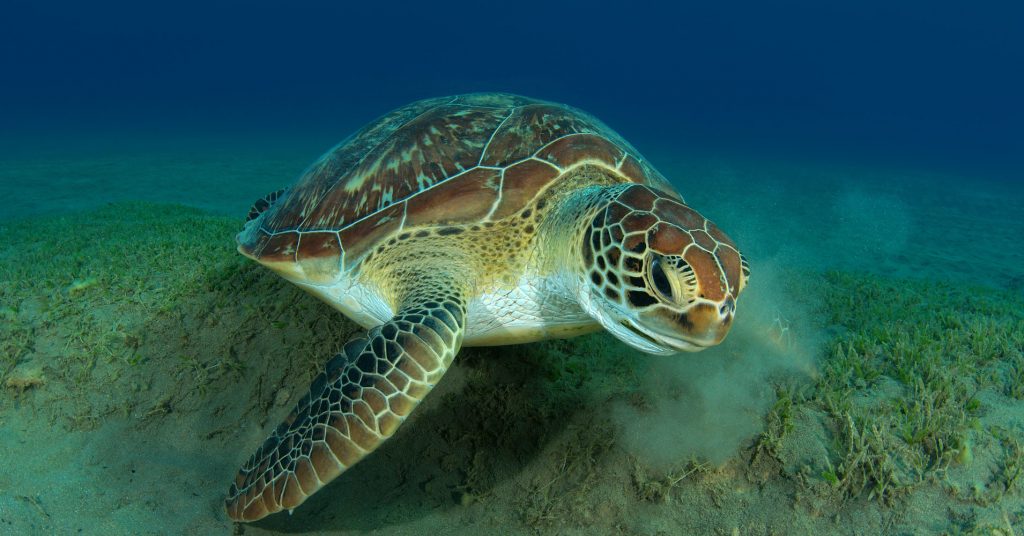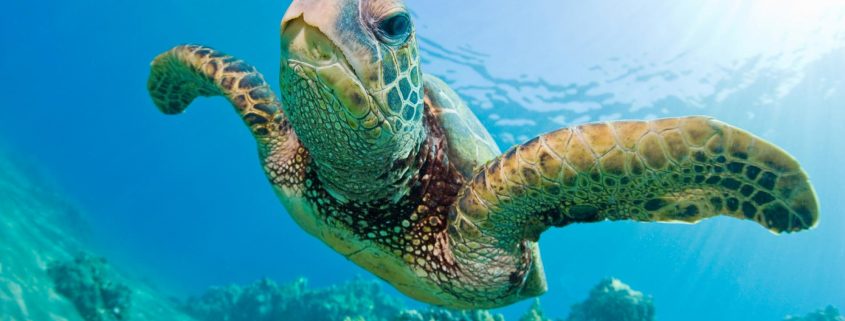5 Interesting Facts About The Endangered Green Sea Turtles
Green sea turtles are majestic creatures of the sea and one of the largest sea turtle species in the world. In addition, these turtles are found in over 80 countries! Unfortunately, they’re still an endangered species due to illegal poaching, egg harvesting, accidental capture, and loss of nesting beach sites. Deepen your appreciation of these beauties with these 5 fun facts!
1. Green Sea Turtles Are Not Completely Green

Photo Credit: huffingtonpost.com
Despite popular belief, the green sea turtle does not get their name from the colour of their shell or skin. Instead, their name stems from the green layer of fat underneath their shell. Researchers believe that the colour of their fat is a result of their diet of seaweed and seagrass.
2. Females Lay More Than 100 Eggs At A Time

Photo Credit: natgeokids.com
During the nesting season, female sea turtles return to the beach where they were born to lay their eggs – this ability is known as natal homing. Returning to their native beach guarantees their nesting will be successful. Once the turtles are on land, they will start to dig a nest with their flippers. Green sea turtles lay about 115 eggs on average, spreading them between two to eight nests.
Bonus fact: Male sea turtles also return to their native beach to mate.
3. The Sex of Baby Turtles Are Determined By Temperature

Photo Credit: cleanmalaysia.com
The temperature of the sand determines the sex of the turtle, with cooler temperatures producing more males and warm temperatures (above 29.3ºC) leading to females. This is why eggs in the middle of the nest are typically female. Unfortunately, this little quirk may have implications because of climate change. Rising temperatures across the globe put sea turtles at risk, leading to an imbalanced sex ratio in the future.
4. Adult Turtles & Juvenile Turtles Have Different Diets

Photo Credit: navalwiki.info
Another unique fact about green sea turtles is their diet, which changes as they age. Juvenile green sea turtles are mostly omnivores. They consume plankton, algae, jellyfish, fish eggs, and more. On the other hand, adult turtles are almost exclusively herbivores, feeding on seaweed, seagrass and algae. The low nutritional value of the green sea turtle’s diet is also one of the reasons why they age so slowly.
5. Green Sea Turtles Migrate Over Great Distances

Photo Credit: natgeokids.com
Green sea turtles are strong swimmers and they possess powerful flippers. This helps immensely during migration, where they have to swim across large distances to get from their feeding area to their nesting area. The turtles can cover distances of up to 2,600km, which is further than the distance from London to Athens! They navigate these large distances using their ‘internal compass’.



